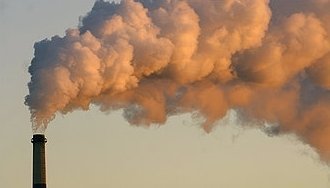
The Clean Energy bills navigating their way through the Senate and House sound good at first.
Consider the sales pitch:
- Create clean energy jobs.
- Achieve energy independence.
- Reduce global warming.
Who can argue with such lofty goals? Not you, not me -- not unless we look at the fine print on Jeff Bingaman's 21st Century Energy Technology Deployment Act (S. 949), and the Markey/Waxman American Clean Energy and Security Act of 2009 (H.R. 2454).
Here's the dirty little secret.
These not-so-clean energy bills would also provide financing for a new generation of commercial nuclear power plants.
According to the Maryland Public Interest Research Group:
The U.S. Department of Energy (DOE) has identified 30 possible new nuclear reactor units, as of February 2009.
As many as six may be built in Texas alone. Florida and South Carolina could get four each, with the remaining sixteen new nuclear reactors being planned for Alabama, North Carolina, Georgia, Pennsylvania, Idaho, Missouri, Maryland, New York, Michigan, Mississippi, Virginia, Lousiana and Tennessee.
Both S. 949 and H.R. 2454 establish a new Clean Energy Deployment Administration (CEDA) to "promote access to affordable financing for accelerated and widespread deployment" of clean energy, energy infrastructure, energy efficiency, and manufacturing technologies. It's bad news. The bills make dangerous concessions to the coal, nuclear, gas and oil lobbies: Two polluting industries -- nuclear power and coal -- are now poised to receive public financing and divert scarce dollars from solar, wind and other benign and truly clean energy development.
After reviewing five recent license applications in May 2008, Moody's Investor Service estimated that the capital cost of a new reactor, including finance costs, could reach $7,500 per kW.103 At that price, the 20 potential new nuclear power plants would require a $300 billion investment over the coming decade.
Maryland Public Interest Research Group
March 2009
For the past five decades, tax payers and rate payers have been underwriting and subsidizing our nuclear power industry to the tune of hundreds of billions of dollars, not even factoring in the hidden costs related to radioactive waste and environmental contamination. And how do we even begin to calculate the high price borne by those who suffer adverse health effects caused by exposure to ionizing radiation?
Let's tell the truth: the U.S. nuclear power industry has proven to be a colossal business failure, which would not have survived without public investment and subsidy. We bailed out these industries long before Wall Street crumbled.
"The failure of the U.S. nuclear power program ranks as the largest managerial disaster in business history, a disaster on a monumental scale. The utility industry has already invested $125 billion in nuclear power, with an additional $140 billion to come before the decade is out, and only the blind, or the biased, can now think that the money has been well spent. It is a defeat for the U.S. consumer and for the competitiveness of U.S. industry, for the utilities that undertook the program and for the private enterprise system that made it possible."
"Nuclear Follies," a February 11, 1985 cover story in Forbes.
No new commercial nuclear reactor has been constructed in the U.S. during the past two decades, but over twenty companies are now planning to build as many as 30 to 34 new nuclear reactors in coming years. An enormous new uranium enrichment plant already under construction in a remote southeastern corner of New Mexico is slated to commence operation this year.
In recent months, multi-national Urenco and its American subsidiary LES, trumpeted the aptly named National Enrichment Facility's potential to provide 50% of uranium fuel for U.S. commercial nuclear reactors. They failed to mention the annual waste stream of thousands of tons of uranium hexafluoride (UF6) -- commonly referred to as "depleted uranium." A great deal of depleted uranium (DU) waste has been recycled into munitions by weapons manufacturers for battlefield use in Iraq and Afghanistan, but close to a billion pounds of DU waste piled up at closed uranium enrichment plants in Kentucky, Tennessee and Ohio remain in inventory.
On May 20th, to the great relief of most Nevadans, the Obama administration cut funding for Yucca Mountain, but the nuclear power industry and it's supporters in Congress are still clamoring for the repository to open.
The costly construction of the intended dump at Yucca Mountain was initially funded by Congress without adequate proof that, once placed in the repository, high level radioactive waste could be isolated from the accessible environment for the 10,000 years during which the waste is most harmful. Among other troubling factors, the intended final resting place for the waste, located just 80 miles north of Las Vegas, Nevada, lies along a line of old volcanoes -- and according to some scientists, an eruption, although highly unlikely, is possible.
Starting with exposure to radiation suffered by America's indigenous uranium miners, and unsecured mounds of uranium mill tailing left behind to be scattered by the wind, the horrors of the nuclear chain are legion. And that's just the beginning. For decades, growing inventories of unstable, gamma ray emitting, highly radioactive, but euphemistically named "spent" fuel assemblies remain as challenges for which no viable, lasting solution has been found.
There's still more: following the meltdown at Chernobyl, Italians voted to decommission their commercial nuclear reactors. Decades later they are still dealing with an enormous inventory of radioactive waste. Some of the rad waste has been shipped off to France, and on May 16th a federal judge gave the green light to U.S. based "Energy Solutions, Inc." to import up to 20,000 tons of Italy's so-called "low level" radioactive waste for reprocessing in Tennessee and ultimate dumping in Utah.
If you don't want to see the promise of a new clean energy initiative subverted by the powerful nuclear energy lobby, contact Congress right away and make your voice heard. Demand that benefits to nuclear power be excised from "clean energy" legislation.
Nuclear Power -- It's the Dirty Little Secret in the Clean Energy Bills.
